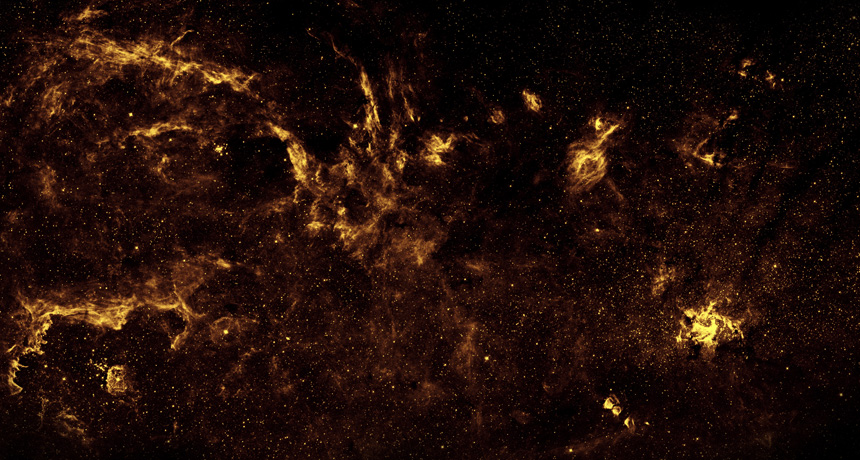Gamma rays offer mixed messages on identity of dark matter
Conflicting results from Fermi telescope puzzle astronomers

CENTRAL HUB The middle of the Milky Way is a crazy place, as shown in this visible and infrared image. Scientists are trying to figure out whether gamma rays from this region are the signature of dark matter.
JPL-Caltech/NASA, ESA, CXC, STScI